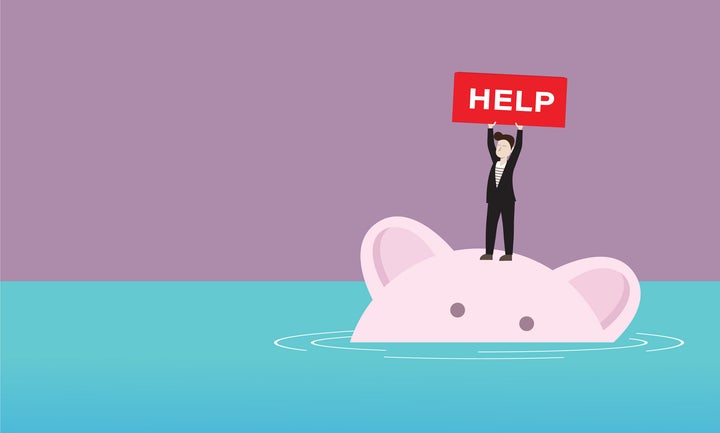
MONTREAL ― Canada’s economy put in a strong showing in 2019, but it wasn’t enough to stop a wave of insolvencies from sweeping the debt-burdened country.
New data from the federal Office of the Superintendent of Bankruptcy show the number of insolvent households grew by 9.5 per cent in 2019, to 131,178, the second highest level on record. The only year that saw more was 2009, at the height of the global financial crisis.
And now businesses are showing signs of being under similar pressure. Insolvencies filed by businesses grew by 2.8 per cent, the first time the number of insolvent businesses grew in Canada since 2001, during the dot-com bust.
Watch: All the ways Canadians are now totally different from Americans, financially. Story continues below.
Ordinarily, when insolvencies ― meaning bankruptcies and proposals ― are on the rise, it’s because of economic weakness. Consumers find themselves in trouble when the unemployment rate is rising and asset prices (stocks, real estate etc.) are falling.
But Canada churned out an impressive 320,000 jobs in 2019, and stock markets soared to record highs. So what gives? The answer is debt ― more of it than ever before, and growing faster than in other countries.
“What’s different than any other time before is interest rates,” said Andre Bolduc, executive director at the Canadian Association of Insolvency and Restructuring Professionals (CAIRP).
“After the financial crisis in 2009, governments flooded their respective economies with money, interest rates went down to keep things moving, to keep the economy going.”
For a while, it worked. “One would argue that consumer spending is what kept the economy going after the financial crisis,” Bolduc said in an interview with HuffPost Canada. “But because money was so cheap, people racked up a lot of debt.”
Businesses also borrowed, and many are now feeling the pinch, particularly in the oil patch, where the slump led to a 75-per-cent jump in insolvencies in 2019. But wholesale, information and cultural industries, professional and scientific services, education and manufacturing businesses also saw large spikes. Despite the constant reports of store closures, retailers actually saw a six-per-cent decline in insolvencies in 2019.
“All sectors have gorged themselves on credit since interest rates were cut during and after the 2008-2009 Great Financial Crisis,” the Macdonald-Laurier Institute said in a report released last month. “Households, corporations, and governments each have raised their debt load to about 100 per cent of GDP.”
Canadians caved to temptation
Although cheap credit has been a temptation in most developed countries, Canadians have given into that temptation more than others. Debt, as a share of Canada’s economic output, has risen by 32.5 per cent since the financial crisis, compared to an average of 13.8 per cent in other developed economies.
Perhaps ironically, our high debt levels may actually be because Canada did relatively well during the last financial crisis, and consumers didn’t have to cut back.
“Most other countries, notably the U.S. and most EU nations, cut back on borrowing for several years during and after the Great Financial Crisis. As a result, the recent increase in debt in most countries started from a lower level than in Canada,” the Macdonald-Laurier report noted.
Canadians are now so vulnerable that a series of small interest rate hikes at the Bank of Canada in 2017 and 2018 is largely responsible for this increase in insolvencies, Bolduc said.
“We know that when the interest rate increases, the insolvency rate increases but there is a two to three-year lag,” he said in a statement. “One of the reasons is that a lot of people struggle with debt for years before they seek financial help.”
““All sectors have gorged themselves on credit since interest rates were cut during and after the 2008-2009 Great Financial Crisis."”
- Macdonald-Laurier Institute report
But Bolduc doesn’t think the situation looks like it would if this were a full-blown economic crisis. When a real crisis hits, full-on consumer bankruptcies soar. For instance, in 2009, they jumped by 50 per cent in the space of nine months. But consumer bankruptcies haven’t spiked ― in fact, they were down by 1.2 per cent. Instead, there was a 17.9-per-cent jump in less extreme consumer proposals.
That means Canadians aren’t losing everything ― they’re simply struggling to cover their debts and need more breathing room, Bolduc says.
But if the economy did actually slow down ― something Finance Minister Bill Morneau said this week could be the case, given the impact of the novel coronavirus ― then “consumers could be in for an additional challenge,” Bolduc noted.